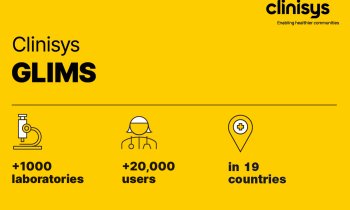Leadership tools for healthcare managers
Strong leadership is vital for healthcare management. 'Operationalisation' of leadership is necessary in order to learn, apply and evaluate leadership in healthcare facilities
contexts, says Dr Eduardo de la Sota Guimón.
But how is this best achieved? Although various authors suggest methods to attain effective leadership, their approaches are not always uniform. Here he reviews some
of the literature and authors' advice.

The Leadership Strategies for Evolving Health Care Executives Programme (Harvard University, 2008) focuses on leadership skills essential for achieving individual and organisational objectives. Interesting highlights:
l Develop creative problem-solving. Learn how to successfully implement your agenda during organisational change
l Evaluate, diagnose, and build a high-performance team
l Attain a firm grasp of your organisation’s financial management controls in order to effectively bring organisational vision to reality
l Learn how improving operational performance
l Balance organisational interests with those of professional staff, patients, and the community
l Position and brand your services and products to prevent them from being turned into a commodity
l Learn legal and ethical responsibilities.
Bryant Nelson has recently written the book (2007) ‘Leadership Tools For Inspiration and Motivation’. He maintains that inspiration and motivation are musts for any leader and that you can have perfect structures, awesome communication, and loads of emotional intelligence, but they are not worth much if your group is not inspired and motivated.
K Blumberg (2007), points out 15 Essential ‘Leadership Tools’:
l Strategic vision. Like an SLR camera with several lenses, you need to be able to think about the long-term (telephoto lens) and the short term (normal length lens).
l Automatic focus. A key leadership job is making sense out of the mass of information in the world and focusing it down to the few key things the organisation needs to do.
l A heart. Blumberg believes you lead best from caring for others.
l Input tools. These include a good pair of ears for listening carefully to those around you, a clear pair of eyes for observing your world, and a strong pair of legs for getting out of your chair and walking to where the action is.
l A funny bone. You need to be able to see something to smile about even in the midst of trouble, because laughter is often the grease that gets the wheels turning again.
l The ability to delegate. And the ability to track performance and correct it before it’s too late.
l Curiosity. The burning desire to understand why things occur.
l Financial intelligence. The ability to understand financial information.
l Planning skills, including time management
l Problem solving skills
l Risk management skills, especially Potential Problem Analysis.
l An evidence-based approach to new ideas – healthy scepticism about the latest management fad.
l Measurement skills. The ability to devise measures for most things that matter in your organisation.
l The ability to know when and how to make decisions.
l Tenacity
Interestingly, the fourth annual Leadership Tools for Women Conference (New York, June 2008), has taken place under the banner ‘Changing the Power of Women’.
The conference is designed specifically for women working in higher posts who wish to heighten their understanding of the contemporary issues facing women as they move to assume leadership roles in their institutions.
The Leadership-Tools.com page, by Richard Gorham, offers leadership tools and resources that will assist managers in becoming more effective leaders in the workplace.
Leadership-tools.com is devoted to researching, creating and delivering high quality tools in five strategic categories:
l Business planning
l Leadership development
l Sales management
l Customer service
l Team building
As we can see, different authors have their specific interpretations over leadership tools, but all of them pursue effectiveness and efficiency, through people.
01.09.2008









